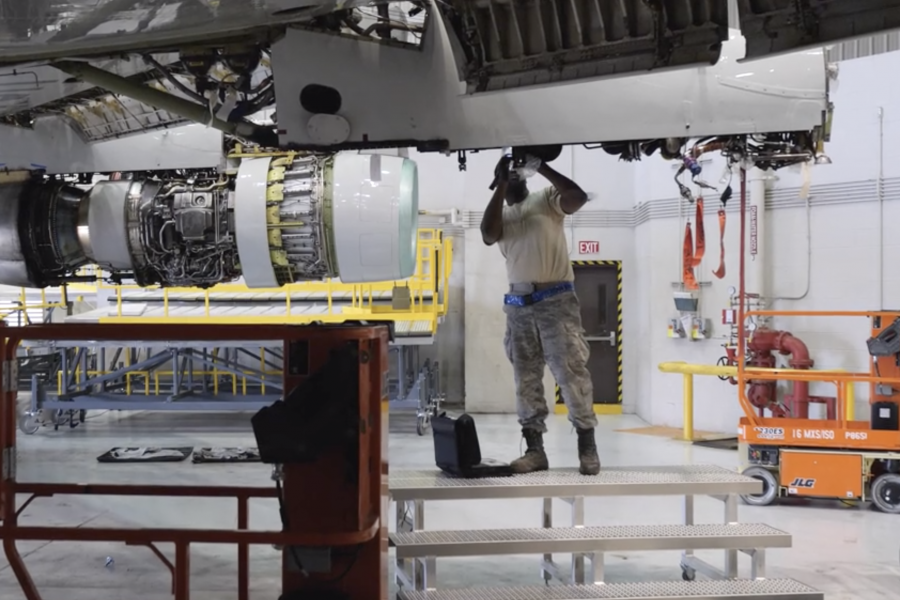The Air Force is working through kinks in its in-house maintenance initiative for the E-8C Joint Surveillance Target Attack Radar System as it tries to save money and time on tuning up the fleet.
About a year and a half after Robins Air Force Base, Georgia, started handling JSTARS maintenance itself, two of three aircraft have successfully finished their in-depth sustainment work. The third, however, has sat in depot since July 2018—nearly 600 days—and it’s unclear when it might be able to leave.
“The first [programmed depot maintenance] repair at [the Warner Robins Air Logistics Complex] is taking longer than anticipated,” said Col. David Menke, senior materiel leader in the Air Force digital directorate’s command, control, intelligence, surveillance, and reconnaissance division.
The Boeing 707-based airframe is stuck in depot because of a “complex repair” needed on the right wing, Menke said.
“The wing plank is a large component with thousands of fasteners,” he said. “All of the fasteners and associated substructure required site-specific work and has driven schedule delays.”
Warner Robins and the JSTARS program office are working with Northrop Grumman to put a Boeing team on contract to handle the wing repair, hoping that working with the manufacturer will speed up the job. Though Northrop is the prime contractor for JSTARS, Boeing originally built the 707.
That airframe is the only JSTARS currently left in the Robins depot. Northrop has more than three jets in its own facility at Lake Charles, Louisiana—exceeding the maximum number of planes the Air Force wanted there at once. Having at least four E-8Cs in depot means the service has fewer than 10 of the in-demand jets available for daily operations.
The Air Force declined to say exactly how many JSTARS Northrop is fixing right now.
The Air Force decided to try managing E-8C maintenance at Robins, where the fleet is based, as an alternative to relying on Northrop for support. Northrop is slated to earn $7 billion in annual JSTARS support contracts from 2000 to 2022, and most recently received a $302 million contract in November for sustainment and modifications in 2020.
But the Air Force has struggled to get Northrop to meet its quality standards and to swiftly move airframes through the depot. The service told Inside Defense in 2018 that it would look at whether USAF and Northrop should split depot responsibilities or whether Robins could handle the entire workload on its own.
“The program office is collaborating with [the air logistics complex] to ensure they are the viable path forward,” Menke said.
Northrop declined to answer questions about its recent maintenance work, following contract changes the service hoped would incentivize better behavior.
“Northrop Grumman is committed to its Joint STARS partnership with the Air Force to ensure mission success,” a company spokesman said.
Menke said Northrop’s performance has modestly improved but still falls short of what the Air Force needs.
Both contractor and blue-suit maintainers face the complications of an aging airframe subjected to significant wear and tear over the past few decades. Aircraft availability is still falling below the Air Force’s goal of 60 percent, though the service did not say where that metric currently sits.
This year, the traditional “C-check” sustainment process is changing over to a new methodology dubbed “Maintenance Steering Group 3,” which is more reliant on data to track the system’s performance trends and predict when parts will have issues. Menke said implementing MSG-3 should grow aircraft availability by 16 percent as planes are required to spend less time in the shop. C-checks take about 430 days on average.
“Organic depot costs are not final, but are anticipated to be lower than Northrop Grumman depot costs,” Menke added.
